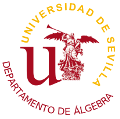Fun With Beer And Mathematics
Michael Harper for RedOrbit.com
 After a long day of toil and trouble, there’s nothing quite like a cold, refreshing beer. As you take your first pull from the bottle or glass, your worries immediately drift away, and as you set your vessel down, you begin to lose yourself in the effervescence of it all, just as the bubbles slowly and continually rise to the top.
After a long day of toil and trouble, there’s nothing quite like a cold, refreshing beer. As you take your first pull from the bottle or glass, your worries immediately drift away, and as you set your vessel down, you begin to lose yourself in the effervescence of it all, just as the bubbles slowly and continually rise to the top.
That is, of course, unless you’re drinking a stout, such as the popular Irish drink of choice, Guinness.
Irish mathematicians have put their minds and glasses together to understand why Guinness bubbles sink and in the end—and several beers later—they have concluded it most likely comes down to the shape of the vessel.
By running the peculiarity of this liquid dynamic behavior through a simulator, an upward flow can be seen running up from the center of the glass as a downward flow carries the bubbles down to the bottom. Continuar leyendo “Aprenda un poco de inglés con… las burbujas de la cerveza Guinness”


 Hizo su tesis doctoral en matemáticas puras, en una rama tan “esotérica” y especializada que incluso si alguien obtiene un gran resultado, éste sólo puede ser valorado por unas docenas de personas en el mundo. Pero él dejó ese mundo y, sin entrenamiento formal, ha entrado en otro: el mundo de la biología molecular, la medicina y la “
Hizo su tesis doctoral en matemáticas puras, en una rama tan “esotérica” y especializada que incluso si alguien obtiene un gran resultado, éste sólo puede ser valorado por unas docenas de personas en el mundo. Pero él dejó ese mundo y, sin entrenamiento formal, ha entrado en otro: el mundo de la biología molecular, la medicina y la “ Hoy 23 de junio
Hoy 23 de junio  We take it as given that all properties of matter originate from the laws of quantum mechanics. We rarely realize, however, that the true power of the nearly hundred-year-old quantum theory lies not in its ability to explain observed phenomena and properties of existing materials but on its so-called ‘predicting ability’—quantum theory can tell us how a new material will behave when it exists only in the mind of a scientist or on the virtual drawing board of a computer well before the material is created in the laboratory. The quantum theory’s predictive ability, for example, allows it to play the role of genetic engineering in the inanimate world.
We take it as given that all properties of matter originate from the laws of quantum mechanics. We rarely realize, however, that the true power of the nearly hundred-year-old quantum theory lies not in its ability to explain observed phenomena and properties of existing materials but on its so-called ‘predicting ability’—quantum theory can tell us how a new material will behave when it exists only in the mind of a scientist or on the virtual drawing board of a computer well before the material is created in the laboratory. The quantum theory’s predictive ability, for example, allows it to play the role of genetic engineering in the inanimate world.